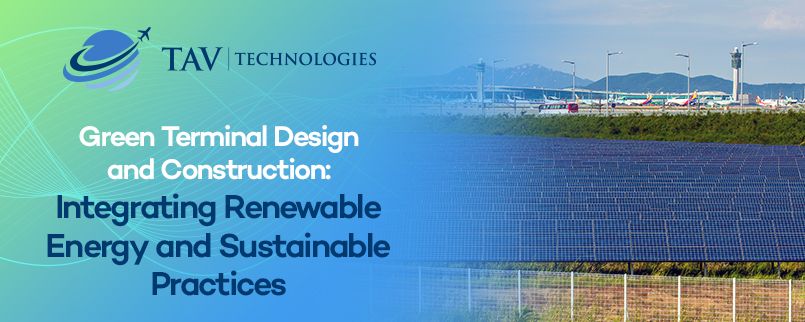
Oct 2024
As global awareness of environmental issues grows, the aviation industry is increasingly prioritizing sustainability. Modern airports are evolving beyond mere transit hubs; they are becoming eco-friendly spaces that reflect a commitment to reducing carbon footprints. The design and construction of green terminals play a crucial role in this transformation, integrating renewable energy sources and sustainable practices to create efficient and environmentally responsible airport facilities. These efforts also align with the industry's net zero target, as highlighted by IATA's Fly Net Zero initiative, which aims for net-zero carbon emissions by 2050.
Harnessing Renewable Energy
Harnessing renewable energy is at the heart of green terminal design. Solar panels, wind turbines, and geothermal systems are being incorporated into airport infrastructure to reduce reliance on non-renewable energy sources. Large-scale solar installations on terminal roofs or adjacent land can generate significant amounts of electricity, powering various airport operations. Notably, Denver International Airport is expanding its renewable energy portfolio with two new solar projects that will produce approximately 36 million kilowatt-hours of electricity annually, enough to power nearly 6,000 homes. This initiative not only lowers operational costs but also contributes to a cleaner environment by reducing greenhouse gas emissions.
Sustainable Construction Practices
The construction phase of a green terminal is just as important as its operational phase. Sustainable construction practices focus on minimizing environmental impact through the use of eco-friendly materials, efficient waste management, and energy-efficient building techniques. Airports are increasingly opting for materials with low embodied carbon, such as recycled steel and sustainable concrete. Modular construction methods are also gaining popularity, as they reduce waste and allow for quicker, more efficient building processes. For instance, airports utilizing these practices have reported significant reductions in construction waste and overall project timelines.
Water and Waste Management
Effective water and waste management systems are essential components of a green terminal. Airports are adopting innovative solutions such as rainwater harvesting, greywater recycling, and advanced wastewater treatment technologies. Oslo Airport exemplifies this by integrating these practices into its environmental management framework, ensuring reduced water consumption and efficient waste handling that align with its sustainability goals. Moreover, airports are implementing waste-to-energy technologies that convert non-recyclable waste into energy, further minimizing their environmental impact.
Enhancing Passenger Experience
Sustainability efforts in terminal design also enhance the passenger experience. Green terminals often feature abundant natural lighting, improved air quality, and biophilic design elements, such as indoor gardens, creating a calming atmosphere. Changi Airport is a prime example, incorporating these elements alongside its commitment to Zero Carbon Growth, providing a serene environment that reduces stress and enhances traveler satisfaction. Such features not only contribute to passenger well-being but also meet the growing demand for environmentally conscious travel options.
The Role of Technology
Technology plays a pivotal role in the implementation of green terminal practices. Smart building systems optimize energy use by automatically adjusting lighting, heating, and cooling based on occupancy levels. Additionally, energy management systems provide real-time data on energy consumption, enabling airport operators to make informed decisions that further enhance sustainability efforts. The integration of technologies like Light Detection and Ranging (LiDAR) and sensor networks also allows for more precise monitoring of passenger flow and resource utilization. LiDAR uses laser pulses to create high-resolution, three-dimensional information, improving the accuracy of resource management and contributing to efficient terminal operations. Sensor networks consist of interconnected devices that collect and share data in real-time, providing insights into various aspects of airport operations, such as energy use, environmental conditions, and passenger movement. This network of sensors enables airports to make data-driven adjustments to enhance efficiency and sustainability.
Future of Sustainability
The integration of renewable energy and sustainable practices in terminal design and construction is vital for achieving a more sustainable aviation industry. As airports continue to evolve, focusing on green terminal design will not only reduce environmental impact but also set new standards for innovation and efficiency in airport operations. By committing to these initiatives, airports can become leaders in the global movement towards sustainability, creating a positive impact that extends far beyond their runways. Let us embrace this vision for the future of aviation, where sustainability and operational excellence go hand in hand.
